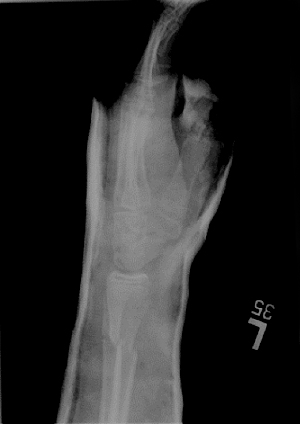Pediatrics Case 5 History/Physical Exam
Pediatric Forearm Shaft Fractures
History and Physical Exam
The mechanism is usually a fall onto an outstreched hand. If both shafts are fractured at the same level, minimal rotational force was present; if at different levels, significant rotation likely occurred. Direct trauma to the forearm typically causes ulnar shaft fracture ('nightstick fracture') but rarely fractures both shafts. Isolated radial shaft fractures are rare.
Physical exam is usually significant for deformity at the level of the fracture. Children are typically exquisitely tender to palpation pain is worse with pronation/supination. A neurovascular exam of the hand should be performed, although nerve injury is rare (reportedly 1-10%). Forearm compartments should be palpated for tenseness, as compartment syndrome is another possible complication that can lead to contractures if not diagnosed and treated early. A careful skin exam is necessary, given the relatively high incidence of open fractures.
